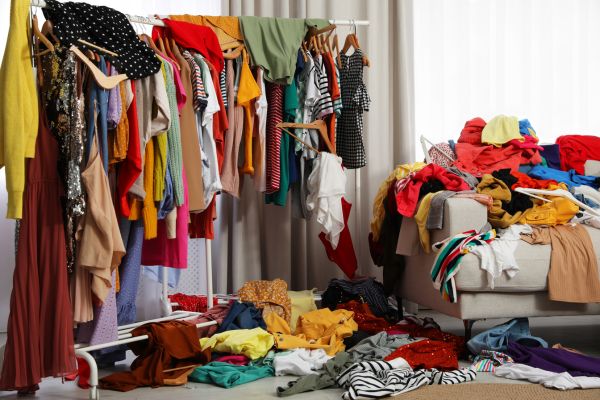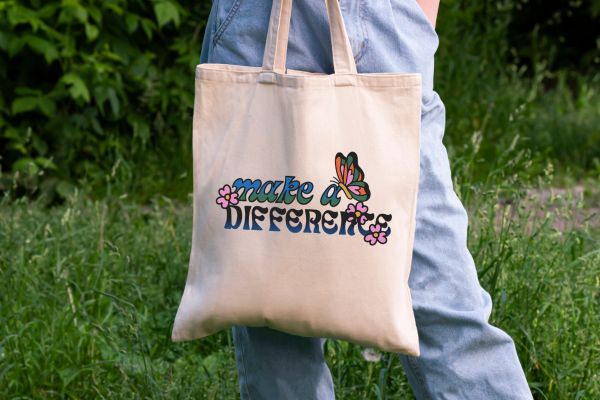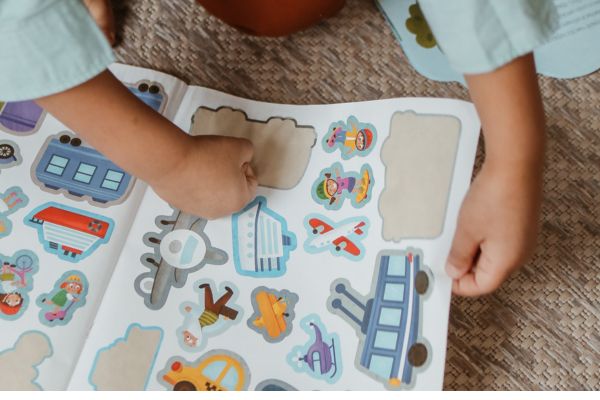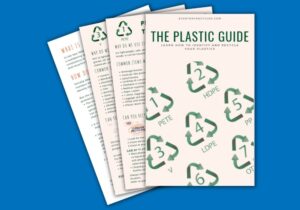Glass recycling is an essential aspect of sustainable waste management. It contributes to resource conservation, energy savings, and environmental protection. However, the process is more complex than simply tossing glass items into a recycling bin.
This article delves into the intricacies of glass recycling, exploring regional differences in glass recycling practices, challenges in the recycling process, and how to recycle glass correctly. Additionally, we’ll examine why not all types of glass are recyclable.
Quick Navigation
Glass in curbside recycling
Glass poses significant challenges in curbside mixed recycling bins due to its tendency to break easily during collection and transportation. When glass shatters, it contaminates other recyclable materials like paper, cardboard, and plastics, making them difficult or impossible to recycle. The shards can also damage sorting machinery at recycling facilities, leading to increased maintenance costs and downtime. Additionally, the mixed collection of glass with other materials often results in lower-quality recycled glass, which may not be suitable for creating new glass products, ultimately reducing the overall effectiveness of the recycling process.
Why a Lot of Glass Doesn’t Actually Get Recycled
Despite the potential for recycling, a significant amount of glass waste does not get recycled. There are several reasons for this, including contamination, the economics of recycling, and logistical challenges.
Contamination is a major issue in glass recycling. When glass is collected in single-stream systems, it often gets mixed with other materials, such as paper, plastic, and food waste. This contamination can make it difficult or even impossible to recycle the glass, leading it to be sent to landfills instead. According to a report by the National Waste & Recycling Association (NWRA), glass collected in single-stream systems in the U.S. has a recycling rate of only about 33%, largely due to contamination.
The economics of glass recycling also play a role. Glass is heavy and bulky, making it expensive to transport. Additionally, the market value of recycled glass is relatively low compared to other materials like aluminum or plastic. This means that in some areas, the costs of collecting, transporting, and processing glass can outweigh the financial benefits, leading recycling facilities to prioritize other materials.
Logistical challenges, such as the lack of infrastructure for color separation and specialized processing facilities, further complicate the recycling of glass. In some regions, there simply aren’t enough facilities equipped to handle large volumes of glass, leading to a reliance on landfilling or downcycling glass into lower-value products.
Why It’s Important to Separate Glass Colors
One of the key factors in successful glass recycling is the separation of glass by color. The three main colors of glass that are commonly recycled are clear (flint), green, and brown (amber). The separation is crucial because each color of glass is used for different purposes, and mixing them can contaminate the recycling process.
Clear glass is typically used for food and beverage containers, while green glass is often used for wine bottles, and brown glass is used for beer bottles. When these colors are mixed together, the resulting recycled glass (known as cullet) can only be used for lower-grade products, such as road aggregate or fiberglass insulation, rather than being remade into new glass containers. According to the Glass Packaging Institute (GPI), the separation of glass by color allows for the highest quality of recycled glass, ensuring that it can be reused to produce the same color of containers, thereby preserving its value and functionality.
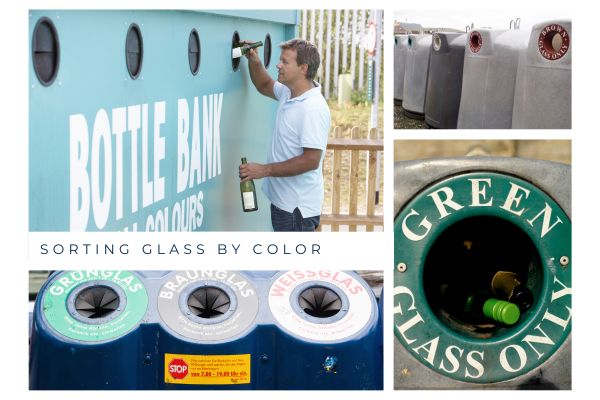
Why Not All Types of Glass Can Be Recycled
While glass bottles and jars are widely recyclable, not all types of glass can be processed in the same way. This is due to differences in the chemical composition and melting points of various types of glass.
For example, tempered glass, such as that used in car windows or shower doors, is treated with chemicals to make it stronger and more heat-resistant. However, this treatment also makes it incompatible with standard glass recycling processes, as it requires much higher temperatures to melt down and can contaminate batches of container glass if mixed in.
Similarly, glass products like light bulbs, mirrors, and Pyrex cookware contain additives that change their properties, making them unsuitable for recycling alongside standard glass containers. These items must be disposed of differently, either through specialized recycling programs or as general waste, depending on local regulations.
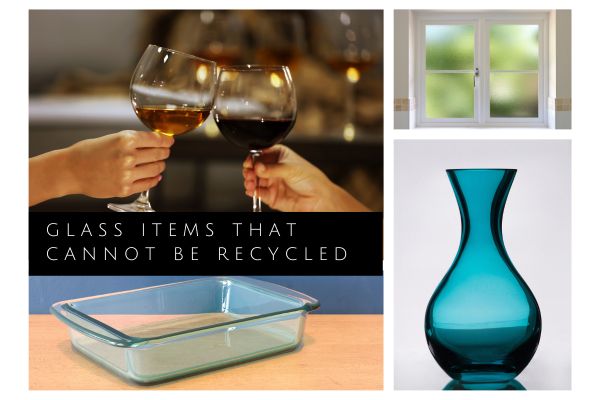
How to Recycle Glass Correctly
To maximize the effectiveness of glass recycling, it’s important for consumers to follow their local rules. If your local recycling program requires or encourages color separation, be sure to sort your glass containers accordingly. This helps ensure that the glass can be recycled into new containers of the same color, preserving its value.
Even if your area uses single-stream recycling, there are steps you can take to reduce contamination. Rinse your glass containers before recycling to remove any food or liquid residue. Avoid recycling non-container glass items, such as windows, mirrors, or light bulbs, as these materials have different chemical compositions and melting points, which can disrupt the recycling process.
It’s also important to remove any lids, caps, or corks from glass bottles and jars before recycling, as these materials are typically not recyclable and can contaminate the recycling stream.
Here are the top tips for recycling glass at home.
- Check if your local curbside or other service accepts glass. If not, you might have access to a bottle bank or container deposit scheme.
- Check if they accept all colors of glass or only certain colors.
- Remember, most curbside services will only accept glass jars and bottles.
- Keep all other glass items out of your curbside recycling bin.
- If household items like drinking glasses, wine glasses, vases, pyrex bakeware, or ornaments are in good condition, please consider donating them for reuse.
- If you need a replacement item for your home, consider buying a second-hand item instead of a new one
A Global Perspective on Glass Recycling Collection Practices
The methods and effectiveness of glass collection for recycling vary significantly across the globe, influenced by local regulations, infrastructure, and cultural attitudes towards recycling. Below we explore how glass is collected for recycling in various regions around the world, highlighting the successes, challenges, and innovations in different countries.
Glass Recycling in Europe: A Model of Efficiency
Europe is often seen as a global leader in glass recycling, with many countries boasting high recycling rates thanks to well-established collection systems and strong regulatory frameworks. One of the key features of glass recycling in Europe is the widespread use of color-separated collection systems.
Germany: The Pioneer of Glass Recycling
Germany is renowned for its efficient and rigorous recycling system, and glass recycling is no exception. The country employs a color-separated system, where residents are required to sort their glass waste into three categories: clear (flint), green, and brown (amber). These materials are then deposited into designated bins or containers, which are typically located in neighborhoods or at recycling centers.
Separating glass by color is crucial because it ensures that the recycled glass can be used to produce new containers of the same color, maintaining the quality and value of the recycled material. Germany’s strong emphasis on public education and strict regulations, such as the “green dot” system, have helped the country achieve one of the highest glass recycling rates in the world.
The United Kingdom: A Mixed Approach
In the United Kingdom, glass recycling practices vary depending on the local authority. While some areas follow the German model of color-separated collection, others employ single-stream recycling, where all recyclables, including glass, are collected together. The latter approach is more convenient for residents but presents challenges for recycling facilities, as the mixed materials must be sorted later, often leading to contamination.
Despite these challenges, the UK has made significant strides in glass recycling, with many local councils offering bottle banks where residents can deposit their glass waste by color. These bottle banks are often located in convenient public spaces, such as supermarket car parks, making it easy for residents to participate in glass recycling.
North America: Convenience vs. Contamination
In North America, glass recycling practices are often shaped by the trade-off between convenience and the risk of contamination. The United States and Canada primarily use single-stream recycling systems, where all recyclables are collected in a single bin and sorted at a material recovery facility (MRF).
United States: Single-Stream Challenges
The single-stream recycling system in the United States has both benefits and drawbacks. On the one hand, it simplifies the recycling process for residents, encouraging higher participation rates. However, the mixing of glass with other materials in the recycling bin often leads to contamination, with broken glass contaminating paper, cardboard, and plastics.
This contamination can reduce the quality of the recycled materials and increase the costs for recycling facilities, as they must invest in additional sorting equipment and processes. As a result, some communities have begun to phase out glass collection in curbside recycling programs, instead directing residents to drop-off centers where glass can be collected separately.
Canada: Regional Variations
Canada’s approach to glass recycling is similar to that of the United States, with a reliance on single-stream recycling in many areas. However, there are significant regional variations. For example, in British Columbia, the Extended Producer Responsibility (EPR) program requires producers to take responsibility for the recycling of their products, including glass containers. This has led to more targeted collection efforts and higher recycling rates for glass in the province.
In contrast, other provinces may have less robust systems in place, leading to lower recycling rates and higher contamination levels. As in the U.S., some Canadian communities have moved towards drop-off centers for glass recycling to improve the quality of the recycled material.
Asia: Emerging Practices and Challenges
Glass recycling in Asia is a mixed picture, with some countries making significant progress, while others face challenges due to limited infrastructure and public awareness.
Japan: A Culture of Recycling
Japan is known for its meticulous approach to waste management, and glass recycling is no exception. The country employs a highly organized system where residents are required to separate their waste into several categories, including glass. Glass is further sorted by color and collected on designated days.
Japan’s success in glass recycling is driven by a combination of strict regulations, public education, and a cultural emphasis on cleanliness and order. The result is a high recycling rate for glass, with much of the collected material being processed domestically and reused in new products.
India: Informal Sector Plays a Key Role
In India, the formal recycling infrastructure is less developed than in countries like Japan or Germany. However, the informal sector plays a crucial role in glass recycling. Waste pickers, known as “kabadiwalas,” collect glass bottles and other recyclable materials from households, businesses, and public spaces. These materials are then sold to scrap dealers and eventually processed by recycling facilities.
While this system helps to divert significant amounts of glass from landfills, it also presents challenges. The lack of formal collection and processing infrastructure means that much of the glass collected by the informal sector is not properly sorted by color, reducing the quality of the recycled material. Additionally, the working conditions for waste pickers are often poor, with little access to protective equipment or fair wages.
Australia: Deposit Schemes and Public Participation
Australia has made significant strides in glass recycling, driven in part by the introduction of container deposit schemes (CDS) in several states and territories. Under these schemes, consumers pay a small deposit on beverage containers, including glass bottles, which is refunded when the container is returned to a collection point.
The introduction of CDS has led to higher rates of glass collection and recycling, as consumers have a financial incentive to return their bottles. Additionally, the separation of glass at collection points helps to reduce contamination and improve the quality of the recycled material in mixed curbside recycling bins.
In regions without CDS, curbside recycling remains the primary method of glass collection. As in North America, the use of single-stream recycling in these areas can lead to contamination issues, but public participation in recycling programs remains high. Separate bins for glass are currently being rolled out in Victoria. The outcome of this change will be interesting to see.
Africa: A Growing Focus on Recycling
In many countries in Africa, glass recycling is still in its early stages, but there are promising developments. South Africa, in particular, has made significant progress, with a well-established glass recycling industry supported by both formal and informal collection systems.
The Glass Recycling Company (TGRC), a non-profit organization, plays a key role in promoting glass recycling in South Africa. The organization works with municipalities, businesses, and the public to increase the collection of glass bottles and jars, which are then processed and reused in new products.
However, in many other African countries, glass recycling infrastructure is limited, and public awareness of recycling practices is low. As a result, much of the glass waste generated on the continent ends up in landfills or is improperly disposed of, posing environmental and health risks.
Conclusion
Glass recycling plays a crucial role in sustainable waste management, but it requires careful attention to detail, from the separation of glass by color to the correct disposal of non-recyclable items. While Europe and the UK have set the standard for effective glass recycling practices, there are still challenges in other parts of the world, particularly in regions with single-stream recycling systems.
By understanding the complexities of glass recycling and following best practices, consumers can help ensure that more glass is successfully recycled, reducing the need for raw materials, conserving energy, and minimizing the environmental impact of glass production. As awareness and infrastructure continue to improve, the potential for glass recycling to contribute to a more sustainable future will only grow.
Some further reading on the subject:
- Glass recycling
- What glass is made of?
- Is Pyrex Recyclable? How to Dispose Of Old Baking Dishes
- How many times can it be recycled?
- What is a bottle bill and how do they work?
Sources:
- Glass Packaging Institute (GPI)
- National Waste & Recycling Association (NWRA)
- European Container Glass Federation (FEVE)








